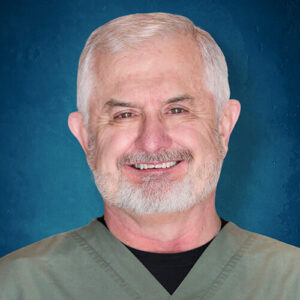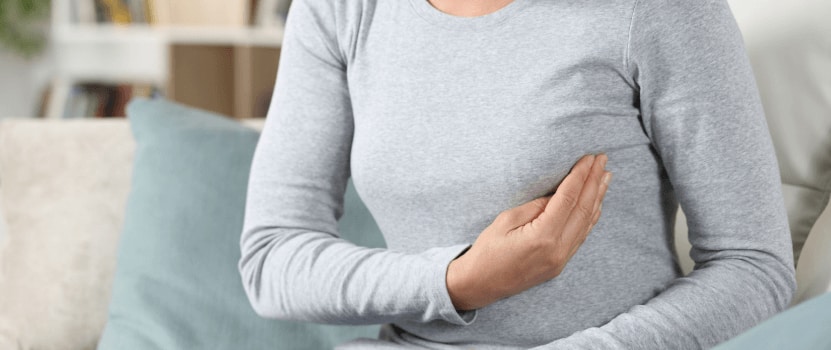With fat necrosis, the name and appearance can seem scarier than the condition itself. Commonly occurring in breast fat tissue, fat necrosis describes the development of dead cells in any fatty tissue. These benign, noncancerous growths are usually the result of some kind of trauma to the surrounding tissue and can sometimes take the form of a lump or cyst.
If you are dealing with fat necrosis or researching potential causes for unknown tissue growth, it is important to work closely with a qualified medical professional. In many cases, fat necrosis is a harmless condition that can go away on its own. If fat necrosis continues growing or is causing pain, more advanced treatment may be needed.
To help you be more informed and engaged as you seek the treatment you need, we’re sharing the following informative guide. We welcome and encourage you to reach out if you have any questions or want to learn more about treatment options.
What causes fat necrosis?
Fat necrosis can occur anywhere in the body where there is fatty tissue, but the most common location is in the breasts. Usually, where there is trauma to fat that causes cell damage, the cells will be replaced with scar tissue. With fat necrosis, the dead cells will instead release an oily substance that can form a cyst, which can feel like a lump.
There are a number of causes that can lead to the damage of fatty tissue that encourages fat necrosis. These causes include:
- Breast trauma from an injury such as a car accident
- Post-surgical trauma from mastectomy or reconstructive surgery
- Breast biopsy for testing
- Radiation therapy for cancer treatment
- Other forms of breast surgery
Fat Necrosis Risk Factors
Additionally, a number of risk factors can increase the chances of breast fat necrosis developing in women, including:
- Age
- Lifestyle factors, such as smoking or alcohol consumption
- Obesity
- Breast size
Fat Necrosis Symptoms
The most common symptom of breast fat necrosis is a round, firm lump. In some cases, additional symptoms may include tenderness, dimples, and bruises in the region.
Any lump or abnormality you encounter from a self-examination should receive immediate attention from a doctor. It is important to receive a professional diagnosis for fat necrosis to ensure that it is being monitored and treated properly.
Fat Necrosis Diagnosis
Doctors will usually diagnose fat necrosis through a review of medical history, physical examination, and diagnostic imagery such as a mammogram, X-ray, or MRI. Other diagnostic tests may include ultrasound or fine-needle aspiration. A biopsy is often not required to diagnose fat necrosis unless the doctor wants to confirm there is not any cancerous tissue growth present.
Fat Necrosis Treatment Options
In the most benign cases of fat necrosis, doctors will recommend monitoring the growth to see if it goes away on its own. Necrosis can usually break down on its own over a period of weeks or months, so as long as the growth is not causing discomfort, this is a common recommendation from physicians. Painful symptoms that may require additional treatment include pain, thickening in the skin, swelling, and other issues such as dimpling or inversion in the nipples.
Situations that may need more involved treatment include an inconclusive biopsy, significant discomfort, or continued growth of the growth. The most common options for removal include:
- Surgical removal
- Needle aspiration
- Liposuction
In some cases, there may be dimpling or visible unevenness in the breasts that patients want to address. Cosmetic procedures to address dimpling and unevenness may be recommended. Approaches that are often performed include a procedure called a small flap reconstruction or fat injections.
Although having fat necrosis does not increase the risk of cancer, necrosis can reoccur. This is why it is important to continue monitoring the breasts for new growth and keep your doctor informed of any abnormalities. Regular self-examinations are highly recommended to check for new growths of any kind.
Contact Innovations Medical for Fat Necrosis Treatment
If you’re looking to treat fat necrosis, Innovations Medical is here for you. Our skilled professionals help you decide which treatment is best for you – keeping you informed and confident in the next steps. We’ve been helping our patients look and feel their best since 2005, and even our most advanced procedures are often minimally invasive.
To find out if treatment to remove necrosis or address cosmetic problems related to fat necrosis is right for you, and to learn how Innovations Medical can improve your life, call us at (214) 643-8665 or schedule a consultation.




